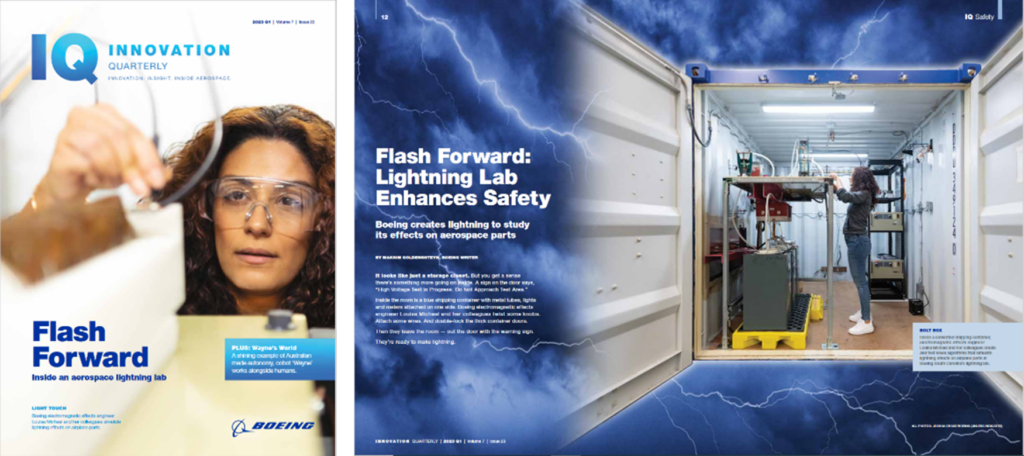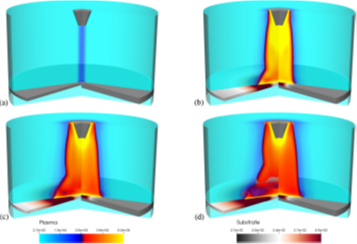On average, commercial planes are hit by lightning once a year. While they are designed to withstand these strikes, every time they happen, the plane may be temporarily taken out of service while it as assessed for damage and any repairs carried out. This can cause significant disruption to schedules which, in turn, contributes to inefficiencies.
By understanding the physics of a lightning strike and how it affects the different materials in a plane, this research is helping Boeing rethink how parts are designed, what damage limits are recommended for particular components and how maintenance and repair practices should evolve accordingly.
This work is concerned with the numerical simulation of elastoplastic, electromagnetic and thermal response of aerospace materials due to their interaction with a plasma arc under lightning strike conditions.
Previous approaches treated the interaction between these two states of matter either in a decoupled manner or through one-way coupled ‘co-simulation’. Neither of these approaches can describe the two-way transient interaction between the plasma arc and the substrate (aircraft skin).
In this research we have developed a methodology for multiphysics simulations of two-way interaction between lightning and elastoplastic materials, which can inherently capture the non-linear feedback between these two states of matter.
This is achieved by solving the magnetohydrodynamic and the elastoplastic systems of equations simultaneously and evolving the magnetic and electric fields dynamically. The resulting model allows for the topological evolution and movement of the arc attachment point coupled to the structural response and Joule heating of the substrate.
This two-way coupling, to the best of our knowledge, has not been previously demonstrated.
The mathematical model and the resulting software are validated against experimental laboratory studies, demonstrating that the growth of the plasma arc can be accurately reproduced, dependent on the electrical conductivity of the substrate.
The figure, at the top of the page, shows results from a study of the effect of lightning strike on multi-layered substrates of different materials, and on a substrate with temperature-dependent electrical conductivity. It is demonstrated that these conditions generate distinct behaviour due to the interaction between the plasma arc and the substrate. Current research with Boeing is considering the effect of lightning strike on fasteners.
This work has been highlighted in an article by the university communications office regarding the strategic partnership with Boeing.
In the same article, our work on ultrasonic excitation of aerospace substrates (to prevent icing on aircraft wings) and on additive manufacturing (laser melt of titanium powders), are also highlighted. https://www.cam.ac.uk/stories/Boeing
The research was also featured in a 10-page article (and on the cover) of Boeing’s Innovation Quarterly.



